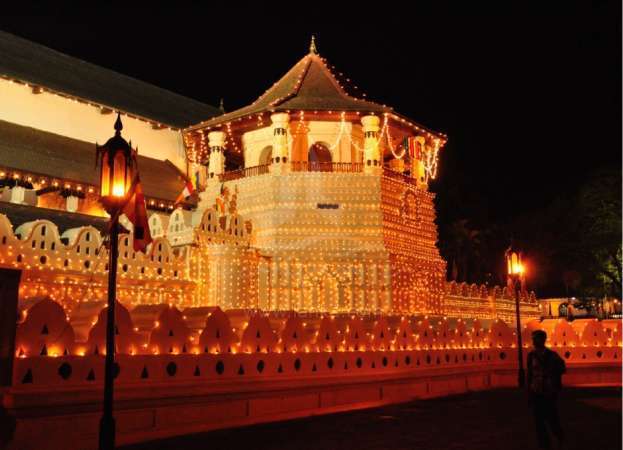Discover Sri Lanka in a Day
Anuradhapura Day Tour
Explore Tours
The ancient city of Anuradhapura is a UNESCO World Heritage Site because of its well-preserved historical ruins dating back to the CENTURIES (4th century BC – 11th century AD) during which it remained the capital of Sri Lanka. Anuradhapura was also the center of Theravada Buddhism for many centuries and is known today as one of the oldest inhabited cities of the world. Located in the North central province of the island, Anuradhapura is about 205kms north of Colombo. The city continuously draws millions of tourists to the sites of ancient ruins – which are the most expressive and unmatchable sites in all of South Asia. A magnificent collection of architectural and archaeological marvels include massive dagobas, crumbling temples, giant brick towers, and archaic pools that were constructed during the several thousand years that the Kingdom of Anuradhapura ruled the nation. At present, these sites that you will visit on your Anuradhapura day tour are used mostly as temples and holy places hence should be given respect at all times.
Historical prominence of Anuradhapura
- 4th century BC was when Anuradhapura became the capital of ancient Lanka – during the reign of King Pandukhabaya.
- Buddhism was introduced in the 3rd century BC – during the reign of King Devanampiyatissa.
- King Tissa built the country’s first Stupa to house the relic of Budhha’s right collarbone.
- He also planted the sacred Bo Sapling brought by Princess Sangamitta, Indian Emperor Asoka’s daughter. Today, this tree is considered as the oldest living tree in the world
- King Tissa built irrigation tanks and a man-made lake (still in use today) to develop inland agriculture.
- Towards the end of the 3rd century, King Mahasena built 16 irrigation tanks and the tallest stupa: Jethavanaramaya.
- In the 2nd century BC, King Dutugemunu successfully recaptured the city whenever it fell to invading Indian armies.
- King Dutugemunu’s reign saw a massive construction boost including monuments such as Ruwanweliseya Stupa, Mirisavetiya Temple, and the Brazen Temple.
Included/Exclude
- Transport in a Private luxury CAR/VAN with services of an English speaking driver guide throughout the stay with sight seeing
- Snack & water bottle for Refreshment
- Parking fees
- High way fees(Arrival and Departure
- Arrival / Departure transfers
- Government taxes
- Airport pick up
- Assistance at the airport
- Fuel/ Driver Bata/ Local insurance for the vehicle
- Accommodation and Meals
- Extras of a personal nature such as liquor, laundry etc
- Entrance fees to places of sightseeing (could be paid directly at each site)
- Tips and porter-age
- International air fares and visa fees
Tour Amenities
Places You Will Visit
Ruvanveliseya Dagoba is celebrated as one of the finest architectural marvels in Anuradhapura. Considered a sacred site by Buddhists from Nepal, Tibet, and across the world, it stands as a testament to the spiritual heritage of Sri Lanka.
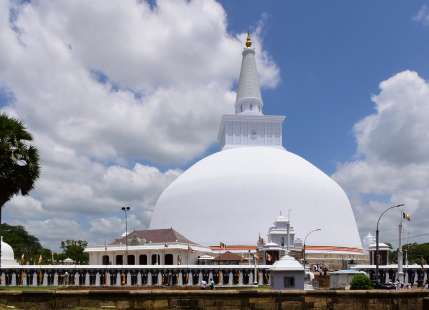
Sri Maha Bodhi is the revered site where the sacred Bo Tree, brought from India, was planted. It holds the distinction of being the oldest historically authenticated tree in the world and is a significant pilgrimage site for Buddhists.
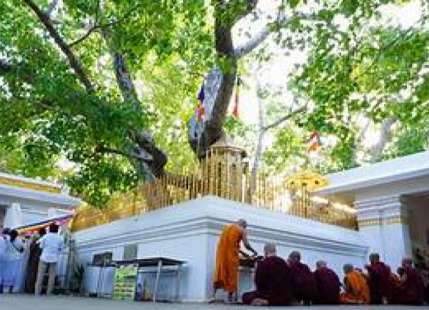
Known for its intricate stone carvings, Isurumuniya Vihara is a rock temple famed for the ‘Isurumuniya Lovers,’ ‘Horsemen,’ ‘Elephants Pond,’ and the ‘Royal Family.’ These masterpieces offer a glimpse into ancient Sri Lankan artistry.

The oldest Dagoba in Sri Lanka, Thuparama was built by King Tissa to enshrine the right collarbone of Lord Buddha. This ancient relic is a revered site for Buddhists and a must-visit for history enthusiasts.
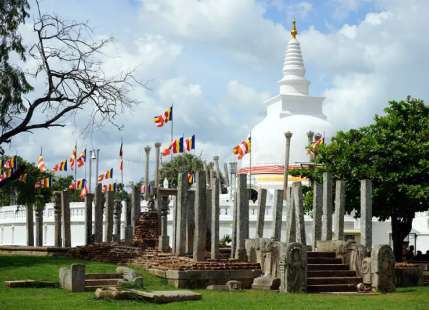
An iconic attraction in Anuradhapura, Jetavanarama Dagoba was built around the 3rd century BC. This ancient marvel boasts an un-plastered dome constructed with over 90 million bricks, making it one of the largest brick structures in the world.

These ancient bathing tanks, known as Kuttam Pokuna, are a testament to the advanced hydrological engineering of ancient Sri Lanka. They remain one of the most outstanding examples of the island's architectural ingenuity.
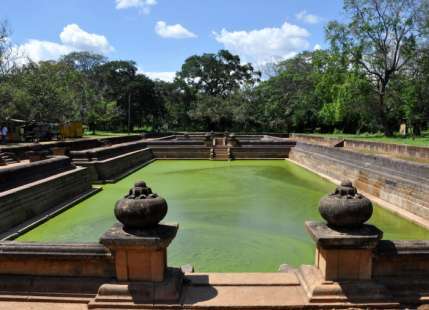
Constructed in the 2nd century BC by King Dutugemunu, Mirisavatiya Dagoba is said to house a relic of Buddha. This sacred site stands as a symbol of devotion and architectural brilliance.








